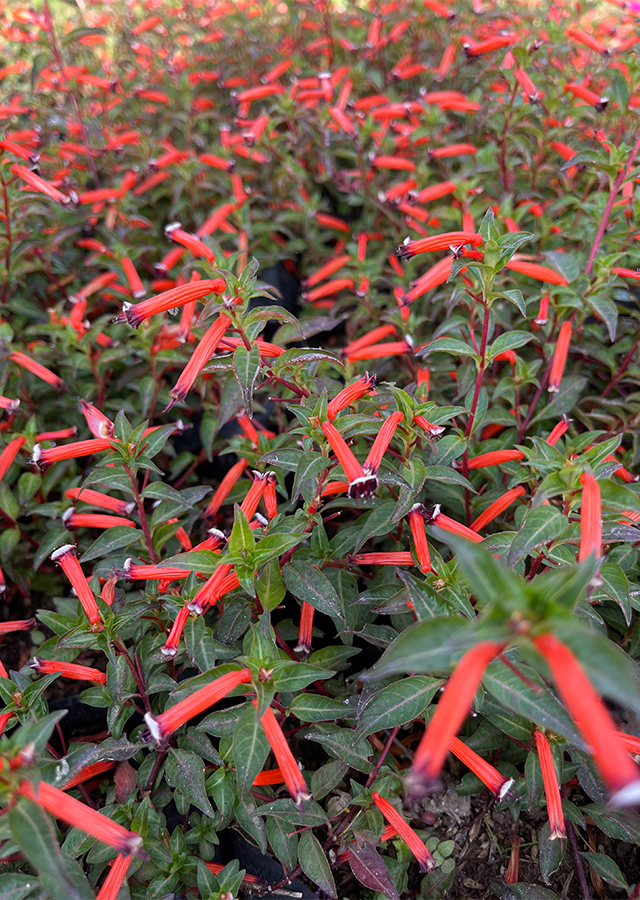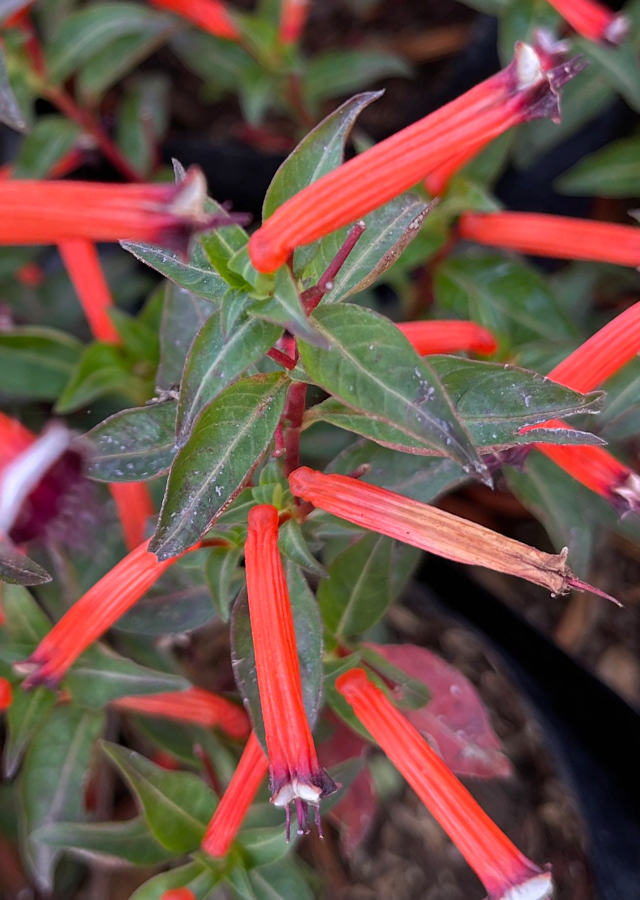Firecracker Plant
Cuphea ignea A.DC.
Lythraceae
Location in our garden
Principal



Synonym
Cuphea liebmannii Koehne
Cuphea watsonii M.E.Jones
Parsonsia ignea (A.DC.) Standl.
Habitus
Shrubs. An evergreen perennial plant, can grow 40 - 90 cm tall
Part Used
Leaves
Flowers
Stem
The Whole Plant
Growing Requirements
Full Sunshine
Need Shade
Drought Resistant
Habitat
Forest
Terrestrial
Overview
Cuphea ignea is a flowering species native to Mexico (Oaxaca, Chiapas) and the West Indies. This plant has become a popular garden plant in temperate regions of the US and Europe. Often grown as an ornamental plant in the tropics. In the UK, this plant has been awarded the Royal Horticultural Society of Garden Merit Award, which makes this plant a mainstay garden plant and is highly sought after and in demand. Besides being beautiful, firecracker plant have seeds that produce oil and have the potential to be used in cooking and as a potential source of oil for industrial purposes. This oil is a good source of medium-sized fatty acids. Cuphea ignea can also be used as an alternative to coconut oil in soaps, detergents, and other products. The plant can also be used as a source of nectar for hummingbirds, butterflies, bees and ants, a source of red dye (the flower parts), and as a medicinal plant. Traditionally this plant is used and believed by the community as a medicinal plant that has good health benefits.
Vernacular Names
No information found. Need further search.
Agroecology
Found growing on Pinus-Quercus-Liquidambar woodland; at elevations around 1,500 - 1,600 m. Prefers a position in full sun, but is tolerant of partial shade. It is best grown in average, medium moisture, well-drained soils.
Morphology
- Stems - thin and slightly brittle, young stems are reddish.
- Leaves - simple, small, green, lance-shaped to oval, tightly arranged in opposite pairs (opposite) or coiled around the stem. Leaf margins flat.
- Flowers - small (2.5 cm long), singly from leaf axils, lacks a crown (petal), tubular flowers resembling flaming cigars, the tuberous parts are actually red-orange petals (sepals fused together), longitudinally grooved, with white and purple-blue tips, and basal hypanthium (round sac-like protrusion at the base).
- Fruits - in the form of a thin explosive capsule containing the seeds.
- Seeds - small, dark brown.
Cultivation
Propagated by seeds - can be sown in situ. Germination usually takes a few weeks because of the hard seed coat.
Chemical Constituents
Capric acid, flavonoids (quercetin and kaempferol glycosides), 7-hydroxy 3-methoxy coumarin 5-O-β-glucopyranoside, phenolic compounds, tannins, alkaloids, glycosides, triterpenes and unsaturated sterols.
Traditional Medicinal Uses
Treat ulcers and stomach ulcers.
Part Used
Reference Sources
- Royal Botanic Gardens. Plants of the World online: Cuphea ignea A.DC. https://powo.science.kew.org/taxon/urn:lsid:ipni.org:names:553048-1. 29-05-22.
- Tropical Plants Database, Ken Fern. 2021. Cuphea ignea. https://tropical.theferns.info/viewtropical.php?id=Cuphea+ignea. 29-05-22.
- Flora Fauna Web. 2022. Cuphea ignea A. DC. https://www.nparks.gov.sg/florafaunaweb/flora/1/8/1899. 29-05-22.
- Mousa A. M. et.al. 2019. Antiulcerogenic effect of Cuphea ignea extract against ethanol-induced gastric ulcer in rats. BMC Complement Altern Med, 19: 345. doi: 10.1186/s12906-019-2760-9. https://www.ncbi.nlm.nih.gov/pmc/articles/PMC6888969/



